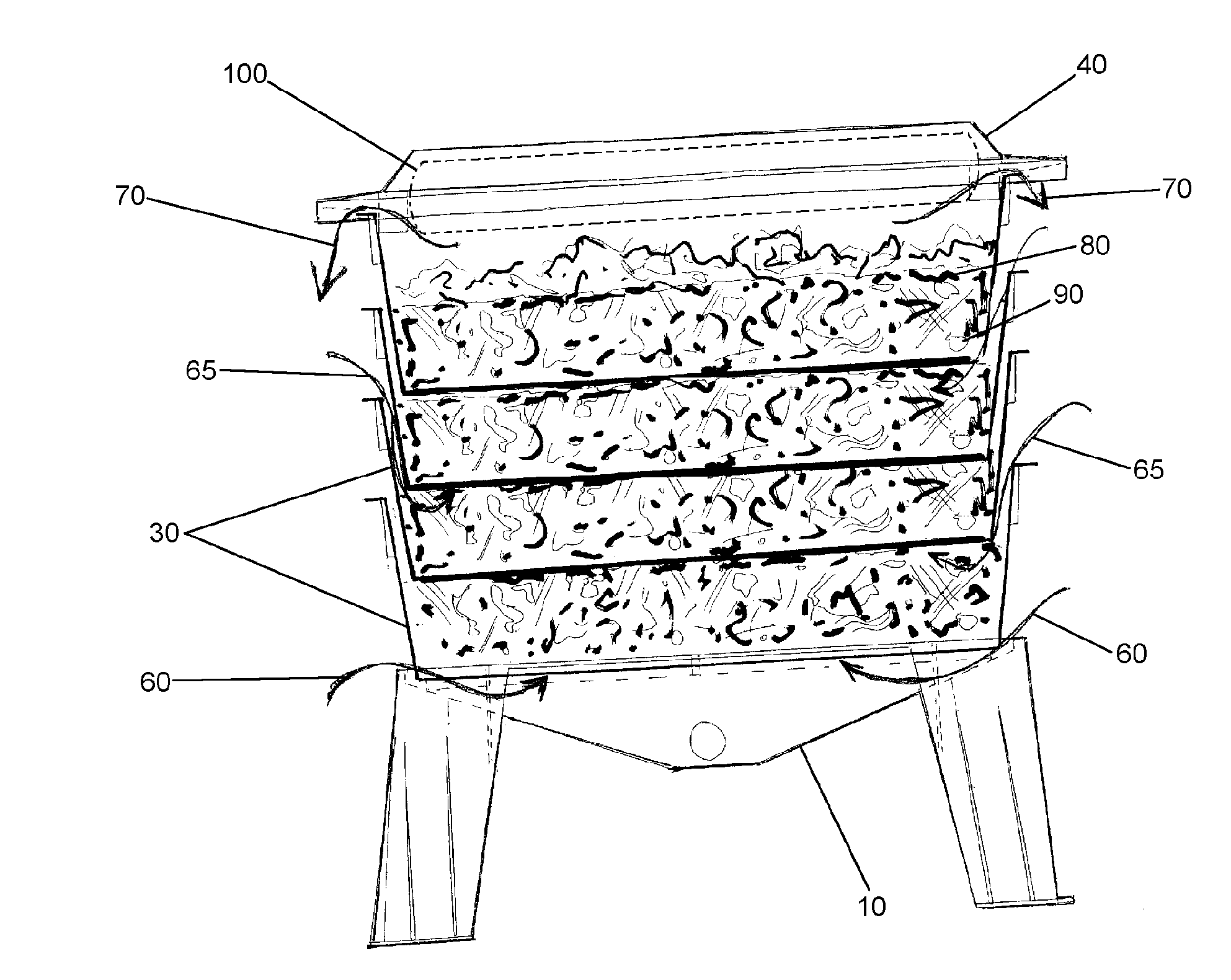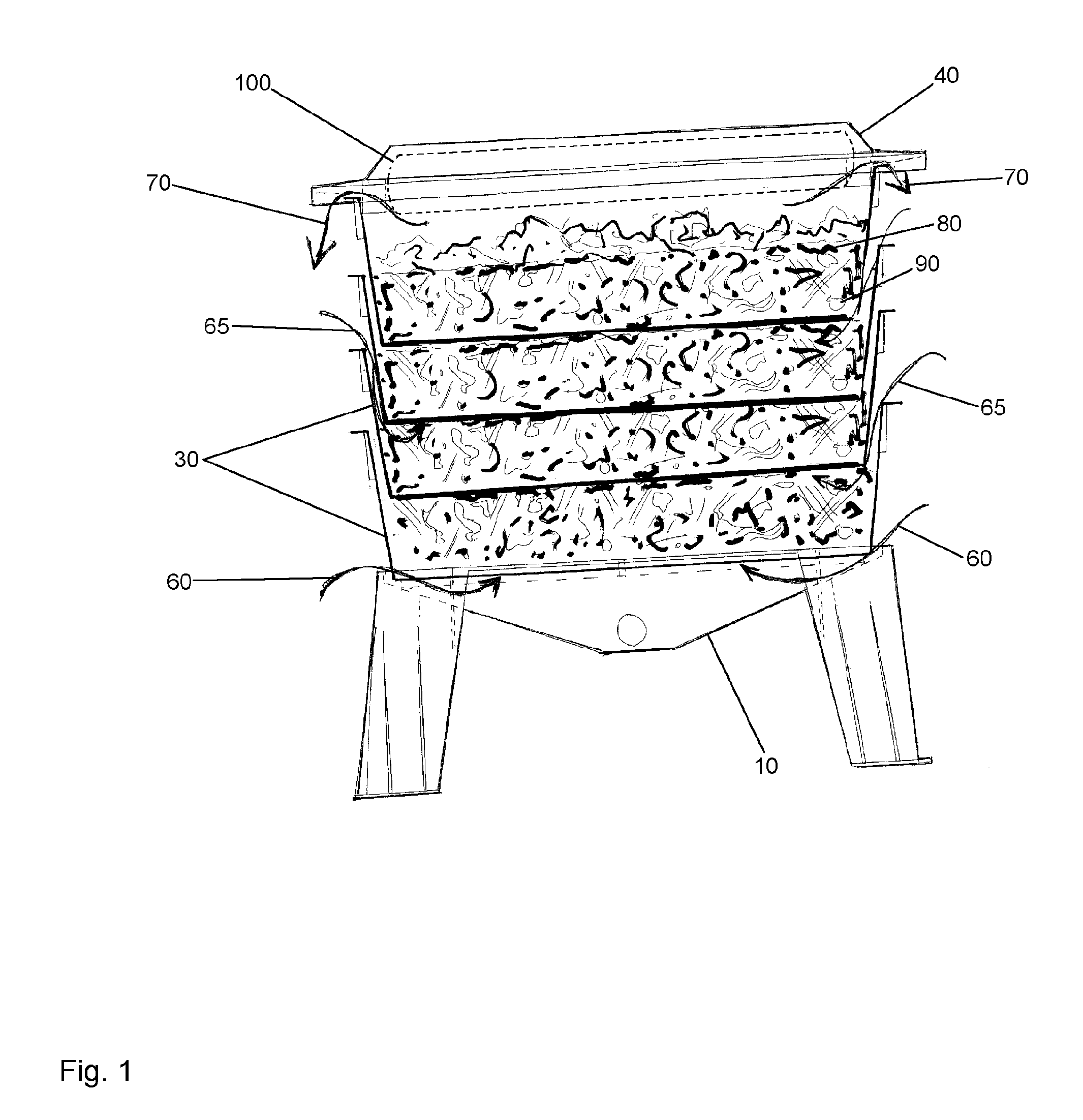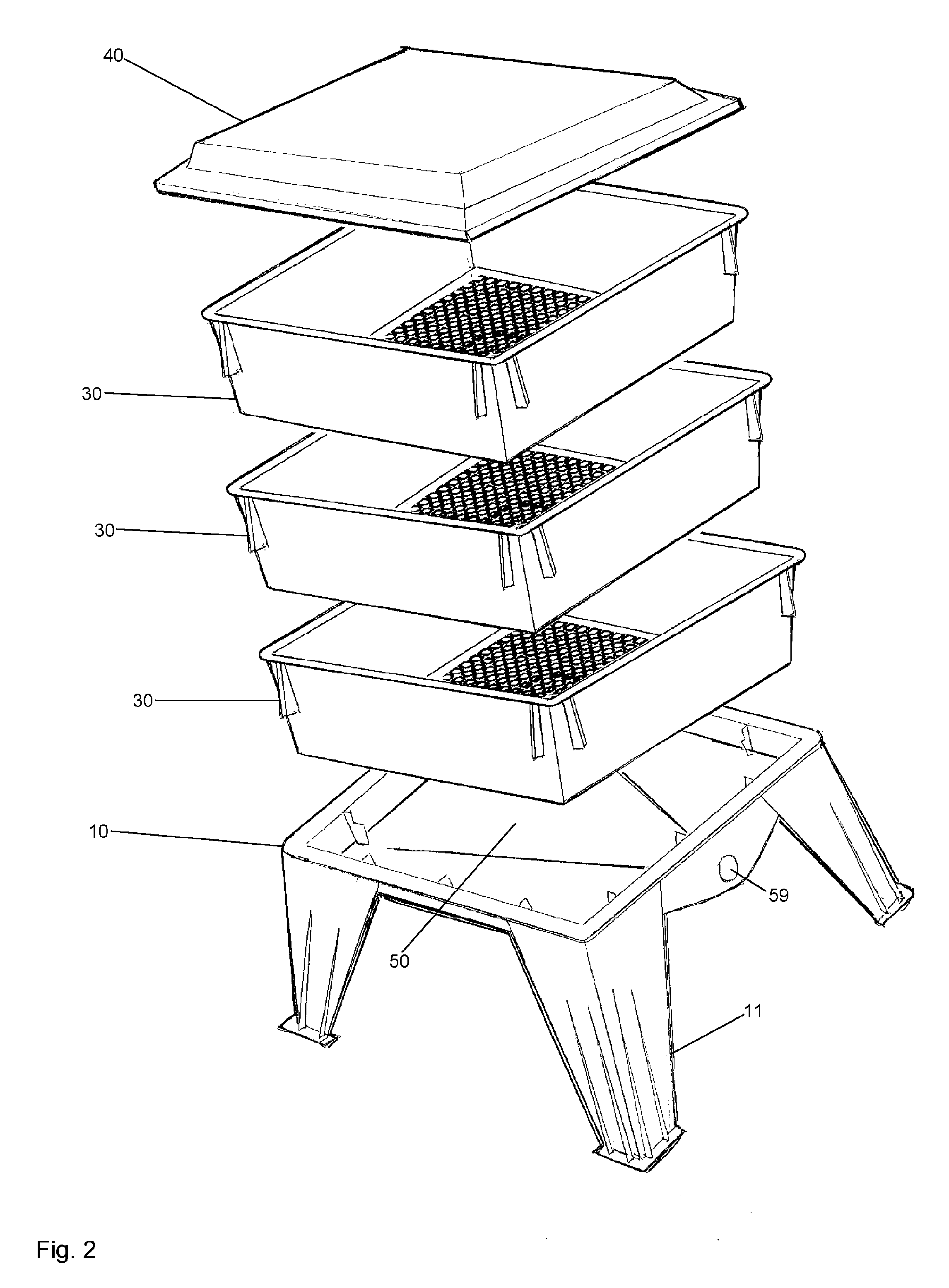Multiple tray vermicomposter with thermal siphon airflow
a vermicomposter and airflow technology, applied in the field of composting devices, can solve the problems of slow process, worm toxic chlorine or other chemicals in the process, and slow process, and achieve the effect of maximizing the vermicomposting process
- Summary
- Abstract
- Description
- Claims
- Application Information
AI Technical Summary
Benefits of technology
Problems solved by technology
Method used
Image
Examples
Embodiment Construction
[0030]New compost trays or stacking trays with freshly loaded bedding and food material for worms are stacked on top of older trays. When worms from below are finished eating food or waste from older stacking trays or when they have a taste for fresher larger pieces of waste they migrate upwards. They may also migrate back downward when they have a taste for smaller pieces of waste. Waste pieces are reduced in size as the composting process or worm feeding process continues. Typically worms prefer smaller pieces of waste over larger pieces. Worms generally do not migrate when conditions are in the preferred range. Thus, worms generally remain in a tray until waste is completely depleted into compost without any small chunks of food or waste product. At that time, worms generally migrate upwards to the next newest tray with newer larger chunks of food or waste. The stacking tray system in this regard yields trays with good compost on the bottom and trays with uncompleted compost prod...
PUM
 Login to View More
Login to View More Abstract
Description
Claims
Application Information
 Login to View More
Login to View More - R&D
- Intellectual Property
- Life Sciences
- Materials
- Tech Scout
- Unparalleled Data Quality
- Higher Quality Content
- 60% Fewer Hallucinations
Browse by: Latest US Patents, China's latest patents, Technical Efficacy Thesaurus, Application Domain, Technology Topic, Popular Technical Reports.
© 2025 PatSnap. All rights reserved.Legal|Privacy policy|Modern Slavery Act Transparency Statement|Sitemap|About US| Contact US: help@patsnap.com



